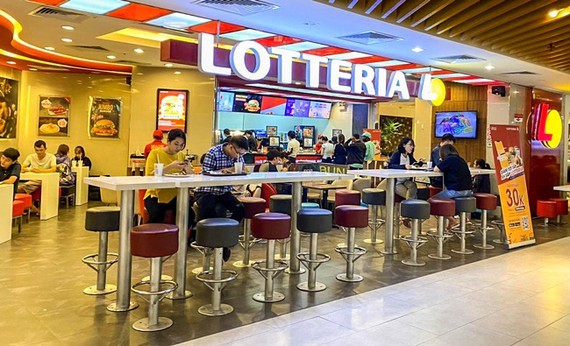
Saigon Investment spoke with Mr. PHAM VIET ANH, an expert on strategy and enterprise growth, to discuss this issue in length.
JOURNALIST: - Sir, the Vietnamese market has a high young population, which is always considered a potential growth market in the retail industry, including in the fast food sector. However, many big retail food companies are still losing money after years of presence in the Vietnamese market, with some brands now even considering withdrawing from Vietnam totally. What is your opinion on this issue?
Mr. PHAM VIET ANH: - Any potential market is a risk market, and considered a two-way currency. If we look at the population structure, Vietnam has a huge young population, with ability to spend on specific products or services. In this aspect, international fast food products come at a high price compared to the general income level of a majority of Vietnamese people. These products are mostly termed in the luxury item bracket in Vietnam, although they may seem cheap products in other high income countries.
Another reason is the huge overhead cost that push the selling price high. In Vietnam, the cost of any good retail space is unreasonably high. Hence, retail brands, including the fast food sector, have to meet high targets in sales faster. Therefore, along with meeting high rental costs, selling retail price cannot also be cheap.
When the cost structure is so high, breaking even becomes rather difficult for all companies. However, for the purpose of competition, enterprises are not only oriented to profit growth but must initially grow in size. This is reflected in the number of stores that enterprises have in the current Vietnamese market. In such a situation, this tends to incur losses. After growing in size, businesses then pay attention to profit. This period is either short or long, depending on the nature of the market, competitiveness, and the speed of economic growth.
On a global scale, when large corporations enter markets of many different countries, it is normal to take profit from one place to finance another place. When a global brand wants to withdraw from the market, there are many reasons, such as a change in company strategy. From an outsider perspective, it is assumed that the company withdrawing or closing has not been successful.
- Sir, if we analyze growth, we see that businesses pay more attention to profit. However, in some cases, such as with Lotteria Vietnam, which has been present in the country for over twenty years, the company is still showing long periods of losses. So what is it that sustains such companies?
- In my opinion, the important thing is how much losses they report each year. The reasons for their losses is unknown to outsiders like us, unless their financial reports are revealed. If the loss is only a small amount compared to the size of the corporate group, then they can write it off. These giant companies see potential for the future in the Vietnamese market, but this potential bears fruit rather slowly. Also, as I said about global business development goals, even though the brands are doing business in a losing market, they still contribute to the size of global sales. Loss is another story, so if another place makes a profits, it will compensate for losses in Vietnam. The problem is that as the scale of sales grows, the size of the company presence also grows, and the brands position also increases globally.
Besides, factors such as stock value and market price are not just looking at profit criteria. This explains why many brands accept losses for a certain period but are well known for other things such as customer size, revenue, and brand name. When financial transactions take place, property trade contributes to the value of the deal, not just the sale profit. Suppose when they want to sell outright, experience and a presence for decades in a market becomes invaluable. This certainly is what the financial statements don't show. Although the ultimate goal of a business is to seek profit at each stage, the time when the business fails or succeeds will depend on the goal or target at each stage. Therefore, it is not that businesses keep withdrawing or losing because of business failures.
- Sir, when many international fast food brands invested in Vietnam, people thought of they would challenge local Vietnamese food chains. However, in fact, many of these chains are still thriving. Is this because of the patronage of domestic consumers?
- The success of a cuisine is because of product localization, and after entering Vietnam, many foreign fast food brands have managed to make their products suitable for the palates of the local people. For example, instead of just selling fried chicken and hamburgers, brands are selling also rice. In fact, even Vietnamese food chains have many products that are more suitable to the local taste. Besides, Vietnamese food chains do not compete directly with foreign giants, so the cost is cheaper and the price is also lower.
However, in order for Vietnamese food chains to build strong brands for themselves, business owners need to pay attention to two factors, namely, promotion and their scale of development. In retail, the most important is presence through multiple chain stores, then the cost of branding is much more effective than chains have only a few stores. Therefore, domestic enterprises should follow the direction of developing a chain of stores first, then promote these strongly, so as to build a well known brand in the minds of consumers.
- Thank you very much.
























